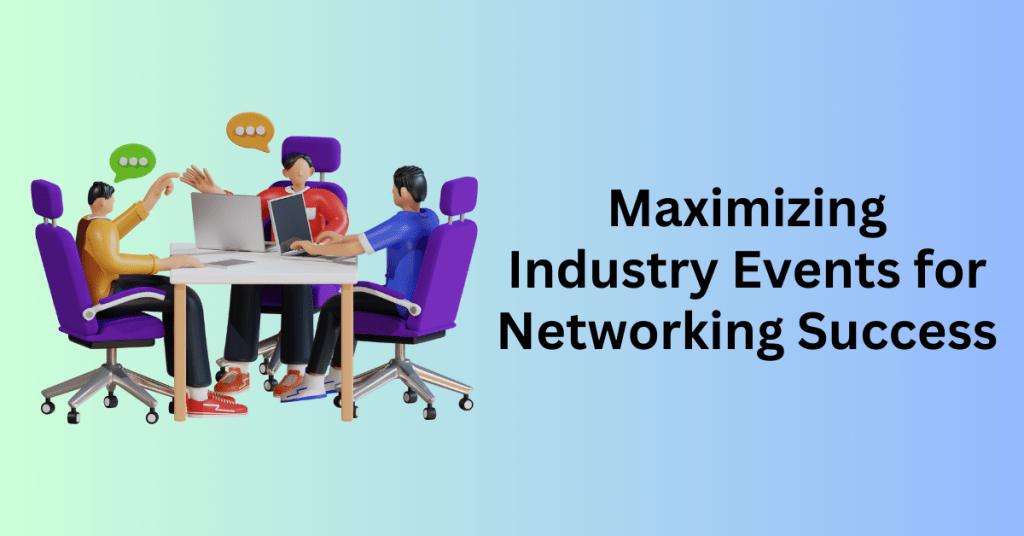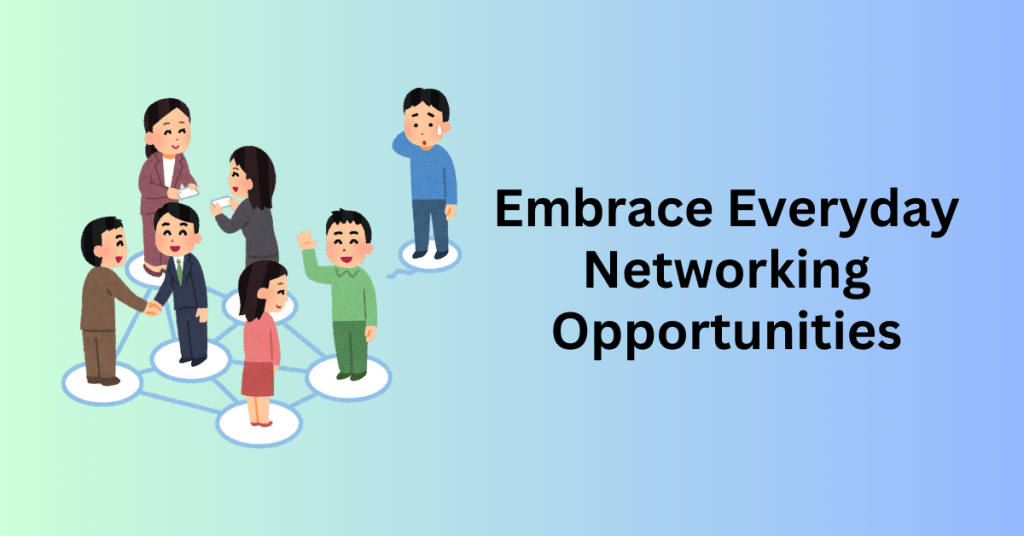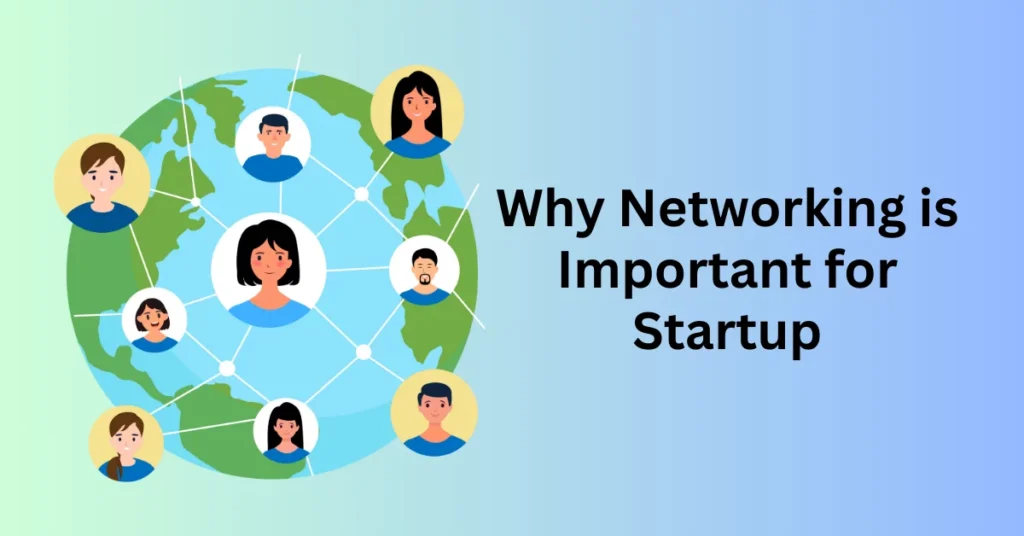In today’s digital world, it’s easy to question the relevance of traditional networking. With just a few clicks, you can potentially reach thousands, if not millions, of people. So why should you invest time in face-to-face interactions when digital tools seem to offer a faster, more efficient way to connect?
But here you are, reading this because you know—genuine connections still hold immense value. And you’re absolutely right.
Despite the explosion of digital marketing and online tools, networking remains a cornerstone of success for startup founders. In fact, a Forbes study found that 78% of startups attribute their early success to strong networking efforts—helping them land their first big clients, secure crucial funding, and build relationships that fuel their growth.
In this post, we’ll dive into six essential steps that will help you network your way to startup success. By the end, you’ll have a clear roadmap to guide your efforts and ensure you’re making meaningful connections that will propel your business forward.
Let’s get started!
Claim your free Traffic Secrets book now
Shift Your Focus: Show Genuine Interest in Others During Networking
When it comes to networking, it’s easy to fall into the trap of focusing solely on what you stand to gain. After all, building strong connections can open doors, attract investors, and create opportunities for your startup. While it’s understandable to want results, this mindset can sometimes backfire. To truly excel at networking, you need to approach it with a genuine interest in others and what they bring to the table.

Many experienced angel investors frequently share their frustration with founders who reach out without taking the time to understand who they’re contacting. Erik Huberman, Founder and CEO of Hawke Media, highlights this common issue: “If you send me a pitch without understanding the kind of projects I invest in, it shows you’re not being intentional. That lack of effort is a red flag.” This principle doesn’t just apply to securing investors—it’s equally relevant when you’re networking to attract clients, partners, or collaborators.
Ultimately, if your sole focus is on what you can gain, your efforts will likely fall short. Networking is about building relationships that are meaningful, mutual, and authentic.
The Secret to Connection: The Benjamin Franklin Effect
A powerful way to establish genuine connections is by leveraging a psychological principle known as the Benjamin Franklin Effect. The origin of this strategy dates back to Franklin’s era, where he successfully turned a rival into a friend by asking for a small favor—borrowing a rare book. The rival, flattered by Franklin’s request, lent the book and eventually grew to admire him.
The psychology behind this effect suggests that when someone does a favour for you, they subconsciously justify their actions by developing positive feelings toward you. While this might sound counterintuitive, it’s a proven method to create trust and rapport.
To apply this to your networking efforts, start by seeking advice, insights, or small, reasonable favours. For instance, you could ask for recommendations on a topic relevant to their expertise or inquire about a resource they might suggest. By doing so, you’re demonstrating a willingness to learn and showing respect for their knowledge—two key elements in building authentic connections.
This approach not only establishes trust but also sets the foundation for a more meaningful and beneficial relationship. Remember, this isn’t about manipulation but rather about creating genuine interactions that benefit both parties in the long run.
Networking Wisdom: Insights From Industry Leaders
Here are ten powerful quotes from top founders, entrepreneurs, and thought leaders to reinforce the value of authenticity and putting others first in networking:
- Reid Hoffman (Co-founder of LinkedIn): “Your network is the people who want to help you, and you want to help them, and that’s really powerful.”
- Dale Carnegie (Bestselling Author): “You can close more business in two months by becoming interested in other people than you can in two years by trying to get people interested in you.”
- Mark Cuban (Investor): “Business happens over years and years. Value is measured in the total upside of a business relationship, not by how much you squeezed out in any one deal.”
- Keith Ferrazzi (Author and Entrepreneur): “The currency of real networking is not greed but generosity.”
- Gina Romero (Entrepreneur): “A really important part of networking is actually about what you bring to the table—not just what you want to get out of it. Contribution is a big part of networking success.”
- Seth Godin (Marketer and Author): “Networking that matters is helping people achieve their goals.”
- Simon Sinek (Inspirational Speaker): “The true value of networking doesn’t come from how many people we can meet but rather how many people we can introduce to others.”
- Richard Branson (Founder of Virgin Group): “Succeeding in business is all about making connections.”
- Bob Burg (Bestselling Author): “The successful networkers I know, the ones receiving tons of referrals and feeling truly happy about themselves, continually put the other person’s needs ahead of their own.”
- Gary Vaynerchuk (Entrepreneur and Investor): “Provide 51% of the value in a relationship, whether it’s with an employee, a client, or a stranger.”
Networking is not about quick wins or superficial connections. It’s about building relationships that stand the test of time and add value to everyone involved.
Mastering the Art of Following Up: Turning Networking Into Opportunity
Networking success isn’t about immediate results. It’s unlikely that a single conversation will instantly land you a sales call, a partnership, or an investment pitch. And that’s perfectly fine—because that’s not the primary goal.

The true objective of networking is building authentic relationships with the potential to open doors over time. These connections, when nurtured, can blossom into opportunities for sales, collaborations, or other meaningful outcomes. But that brings up an important question:
“How do you measure progress in relationship-building? How do you know you’re on the right track?”
The answer lies in having a well-structured follow-up strategy.
A Systematic Approach to Following Up
Take John Corcoran, co-founder of Rise25 Media, as an example. He advocates for categorizing your follow-up leads into four key timeframes:
- 30 days
- 60 days
- 6 months
- 12 months
For prospects with strong potential—such as those likely to turn into clients or strategic partners—place them in the 30-day bucket, ensuring you reconnect within a month. For others who may be less immediately relevant, they can go into the 12-month bucket, where you’ll still follow up, but at a much lower frequency.
By using this system, you ensure that no valuable connection slips through the cracks, while prioritizing your time for those most likely to yield results.
What Should You Say in Your Follow-Ups?
The key to a successful follow-up lies in offering value. Corcoran emphasizes the importance of finding ways to help the other person first:
“Before drafting the follow-up message, I focus on identifying opportunities to deliver value—especially if it’s something that doesn’t require a major time investment on my end.”
This value doesn’t necessarily have to align with your business. It could be as simple as sharing a helpful resource, making an introduction to someone in your network, or supporting their current goals. The aim is to strengthen the relationship, establish trust, and create a genuine connection.
Tools to Streamline Your Follow-Up Process
Managing follow-ups manually can be overwhelming, especially as your network grows. To stay organized and ensure consistency, consider using tools like ClickFunnels as your CRM and email platform.
ClickFunnels allows you to automate follow-up emails, set reminders for check-ins, and keep track of where each contact stands in your relationship-building pipeline. With its built-in analytics, you can monitor which leads are converting into sales, partnerships, or other valuable outcomes.
By leveraging technology, you can stay on top of your networking efforts while maintaining a personal touch, ensuring your relationships continue to grow and deliver long-term benefits.
Networking isn’t about instant wins—it’s about playing the long game. With a solid follow-up strategy and a commitment to delivering value, you’ll create a foundation of trust that leads to meaningful opportunities over time. Don’t underestimate the power of persistence and the art of staying connected. It’s these actions that turn conversations into collaborations and acquaintances into allies.
Claim your free Traffic Secrets book now
Unlock the Potential of Your Existing Network for Networking
Before diving into the process of expanding your network, it’s essential to recognize one of your most accessible and powerful resources: your existing connections. Whether through previous jobs, school experiences, or personal relationships, you already have a network of people who could directly help you or introduce you to others who can.

Your current network is often an untapped goldmine for building meaningful connections and opening doors. Here’s how to use it effectively:
Step 1: Start With Shared History
When reaching out to someone in your existing network, begin by referencing your shared history. This could be a past work project, a class you took together, or a mutual friend who introduced you. Acknowledge the relationship to create a sense of familiarity and trust.
For example:
- “Hi [Name], I hope you’ve been doing well! I was just thinking about that marketing project we collaborated on back at [Company/School].”
- “Hey [Name], it’s been a while since we last caught up at [Event/Occasion]. I wanted to reach out to reconnect and see how you’re doing.”
This small reminder helps establish rapport and lays the groundwork for a productive conversation.
Step 2: Be Clear About Your Intentions
Once you’ve rekindled the connection, be upfront about why you’re reaching out. People appreciate clarity and honesty, so get to the point without beating around the bush.
For instance:
- “I’m reaching out because I’m currently launching a [project/startup/initiative] and was wondering if you could offer some advice or guidance.”
- “I’m working on expanding my network in [industry/field] and thought you might have some insights or recommendations.”
Being transparent about your purpose shows respect for their time and fosters open communication.
Step 3: Offer Value in Return
Networking is a two-way street, so always consider how you can provide value to the person you’re contacting. Think about their goals, challenges, or interests, and offer something that aligns with those.
Value doesn’t have to be complex—it could be as simple as:
- Sharing a relevant article or resource.
- Offering to introduce them to someone in your own network.
- Providing insights from your expertise or field of work.
For example:
- “I noticed you’ve been exploring [topic/area]—I recently came across an article that might be helpful and wanted to share it with you.”
- “If there’s anyone in my network you’d like to connect with, I’d be happy to make an introduction.”
By focusing on their needs as well as your own, you create a more balanced and meaningful interaction.
Step 4: Be Prepared for a Polite ‘No’
Not every connection will lead to a new opportunity, and that’s okay. Some people may be too busy, uninterested, or unable to help at the moment. Always approach these conversations with a willingness to accept a polite ‘no’ and gratitude for their time regardless of the outcome.
For example:“Thank you for considering my request—I completely understand if now isn’t a good time. I appreciate you taking the time to hear me out!”
Maintaining a positive tone ensures that the relationship remains intact, even if your immediate request doesn’t pan out.
Step 5: Keep the Bigger Picture in Mind
The goal isn’t just to get something out of each conversation—it’s to strengthen and sustain relationships over time. Building goodwill and trust within your existing network can lead to unexpected opportunities in the future.
By thoughtfully leveraging your existing connections, you’ll not only expand your network but also foster relationships that could unlock doors for years to come.
Actionable Tip: Stay Organized
To ensure you’re making the most of your network, keep track of your contacts and interactions. Tools like LinkedIn or a CRM platform such as ClickFunnels can help you organize your outreach efforts and set reminders for follow-ups.
Remember, the most successful networking starts with nurturing the relationships you already have. Use your existing network as the foundation to build new opportunities for growth and collaboration.
Maximizing Industry Events for Networking Success
Industry events are one of the most effective ways to connect with people who can make a real impact on your startup’s journey. These gatherings, whether in-person or virtual, bring together professionals from your field, creating a unique opportunity to meet potential clients, investors, collaborators, or strategic partners who share your interests and goals.

But let’s be honest—attending these events can feel intimidating. It’s normal to worry about being overwhelmed by the crowd, struggling to start conversations, or feeling out of place among more seasoned professionals. These concerns are common, but they don’t have to hold you back. With the right mindset and strategies, you can turn these events into networking goldmines.
Overcoming Event Jitters
Feeling apprehensive is completely natural, especially if you’re new to the scene. However, preparation and a clear plan can make all the difference. Here are some tips to ease your nerves:
- Set Clear Goals
Know what you want to achieve before you step into the event. Are you looking for potential investors? New clients? Industry mentors? Having a clear purpose will guide your interactions and keep you focused. - Prepare a Conversation Starter
Icebreakers don’t have to be complicated. A simple question like, “What brought you to this event?” or “What’s the most exciting project you’re working on right now?” can spark a meaningful conversation. - Focus on Listening
You don’t need to dominate the conversation to make an impact. People appreciate good listeners. Ask thoughtful questions, and show genuine interest in their responses.
Making the Most of Each Interaction
Remember the networking framework we’ve discussed:
- Start Conversations
Approach people with confidence and curiosity. Whether it’s during a coffee break or a Q&A session, look for opportunities to introduce yourself and engage. - Ask Questions to Assess Value
As you talk, ask questions that help you understand whether the person is aligned with your goals. For example:- “What challenges are you currently tackling in your business?”
- “What kind of partnerships or collaborations are you looking for?”
- These questions give you insight into whether and how you might work together.
- Categorize for Follow-Up
After the conversation, mentally or physically note where this person fits into your follow-up buckets:- 30 days for high-potential leads.
- 60 days, 6 months, or 12 months for others based on their relevance and opportunity.
Following Up With Impact
The real magic of networking happens after the event. Make sure your follow-ups stand out by focusing on delivering value. Whether it’s sharing a resource, offering advice, or simply sending a thoughtful note, keep the relationship warm and relevant.
For example:
- “It was great meeting you at [event name]. I really enjoyed our discussion about [topic]. Here’s an article I came across that might be helpful for your work on [specific challenge].”
This approach reinforces your connection and positions you as someone worth staying in touch with.
Leverage Technology to Stay Organized
Managing all the contacts you meet at industry events can be overwhelming, but tools like ClickFunnels can make it seamless. As a CRM and email platform, ClickFunnels allows you to:
- Categorize contacts into follow-up buckets.
- Automate follow-up emails so you can stay top-of-mind without constant manual effort.
- Track outcomes to see which connections lead to investments, clients, or partnerships.
By using technology to streamline your networking process, you ensure no valuable connection gets overlooked.
Every conversation you have at an industry event is a potential gateway to an opportunity. Even if someone doesn’t seem immediately relevant, they might introduce you to someone who is, or they may become valuable down the line.
So, approach these events with an open mind and a willingness to learn. Take the time to connect, listen, and build relationships. With consistency and effort, your presence at these events can become a powerful driver of your startup’s growth.
Claim your free Traffic Secrets book now
Mastering Online Networking: The Power of the Dream 100
In today’s hyper-connected digital landscape, networking online is no longer optional—it’s essential. To stand out and make meaningful connections, you need a strategy that’s as intentional as it is impactful. Enter Russell Brunson’s Dream 100, a concept introduced in his book Traffic Secrets.

This approach focuses on identifying and building relationships with the 100 most influential people in your industry—clients, collaborators, or influencers—who have the potential to create transformative opportunities for your business.
Here’s how to craft and execute your Dream 100 strategy, step by step.
Step 1: Create Your Dream 100 List
The first step is to identify the key players in your industry who can significantly impact your growth. These might include:
- Ideal Clients: Businesses or individuals you’d love to have as customers.
- Industry Influencers: Thought leaders or content creators with audiences that align with your niche.
- Potential Partners: Businesses or organizations that could collaborate with you to reach a larger audience.
Be as specific as possible when creating your list. Instead of simply listing companies, identify the decision-makers or influencers within those organizations. The more targeted your list, the easier it will be to tailor your approach.
Step 2: Build a Relationship Framework (60-Day Plan)
Networking doesn’t happen overnight. You need a patient and structured approach to connect with your Dream 100 successfully. Here’s a 60-day plan to guide your efforts:
Days 1–14: Discover, Follow, and Engage
To find your Dream 100 online, start by thoroughly researching their social media profiles, blogs, and websites. Subscribe to their newsletters and follow them on all relevant platforms. This will allow you to stay updated on their latest content and activities, positioning you to engage in a meaningful way.
Once you’ve connected with them, it’s essential to engage consistently. Take the time to comment on their posts, share their content, and participate in thoughtful conversations. Avoid leaving generic remarks and focus on being genuine and authentic in your interactions, demonstrating a sincere interest in their work.
During the first two weeks, your primary goal should be to get noticed in a positive way. Establish yourself as a supportive and engaged follower—someone who truly values their work and actively contributes to their online community. This will help build a foundation for stronger connections moving forward.
Days 15–30: Initiate Direct Contact (No Selling)
Once you’ve established yourself as a familiar and engaged presence, take the next step by reaching out through a direct message or email. This allows you to initiate a more personal connection.
When reaching out, make sure to keep the focus on them. Rather than pitching your product or service, start by asking a thoughtful question about their work, seeking advice, or expressing how they’ve inspired or helped you. This shows genuine interest and respect for their expertise.
The main goal at this stage is to build rapport and start a conversation. Focus on developing a natural connection, rather than trying to sell or promote anything. This approach will lay the groundwork for a meaningful relationship over time.
Days 31–60: Deepen the Connection
To maintain regular communication, keep the conversation going by engaging with their content, responding to messages, and sharing valuable insights or resources. This ensures that your relationship continues to grow and remain meaningful.
Look for ways to offer value to them. Whether it’s sharing their work with your audience, connecting them with someone in your network, or providing a helpful tip or tool, showing that you’re willing to contribute will strengthen your connection.
Above all, focus on building trust. Trust is the foundation of any successful relationship, so prioritize being helpful and authentic. Avoid making premature requests and instead, let the relationship evolve naturally over time.
Day 60+: Make Your Pitch (When the Time is Right)
After following the plan and building a genuine connection, you’ll have a solid understanding of their needs, interests, and goals. This insight allows you to introduce your product, service, or collaboration opportunity in a way that feels natural and beneficial for both parties.
When presenting your offer, focus on value. Frame your pitch around how it will benefit them, emphasizing how your product or service aligns with their interests. The more closely your offer matches their needs, the more likely they are to see the value and be open to saying yes.
Key Tips for Success
- Be Patient: Building meaningful relationships takes time. Rushing the process or being overly pushy can harm your efforts.
- Stay Genuine: People can sense when you’re being insincere. Approach every interaction with authenticity and a genuine desire to connect.
- Track Your Progress: Use tools like ClickFunnels or any CRM to monitor your Dream 100 efforts. These platforms can help you track engagement, manage follow-ups, and measure outcomes.
The Dream 100 isn’t just a strategy—it’s a mindset. It shifts the focus from selling to building relationships, which ultimately leads to more meaningful and lasting connections. By investing in these relationships upfront, you create opportunities that might otherwise be out of reach.
If you’re ready to start building your Dream 100 list, don’t hesitate to dive deeper into Russell Brunson’s Traffic Secrets. The book offers detailed strategies for leveraging your Dream 100, driving online traffic, and scaling your business to new heights.
Claim your free Traffic Secrets book now
Embrace Everyday Networking Opportunities
Opportunities to connect with people are everywhere—often in the most unexpected places. Whether you’re waiting in line at a coffee shop, striking up a casual conversation at the gym, or standing in line at the grocery store, you’re surrounded by potential connections every single day.

You never know who might have a need that your product or service can fulfill or who might open the door to your next big opportunity.
Take Salesforce, for instance—a company that has grown into a multi-billion-dollar leader in the CRM industry, generating over $31 billion in annual revenue. How did Salesforce land some of its very first customers? Not through polished pitches or elaborate campaigns, but in the most unassuming places—like a chance encounter while standing in line at a shop.
This story serves as a powerful reminder that networking isn’t confined to formal settings or structured events. Some of the most impactful connections can come from spontaneous conversations in everyday life.
The Mindset Shift: Every Interaction Counts
To truly embrace networking in your daily life, it’s important to shift your perspective.
- See Every Interaction as an Opportunity: Whether you’re chatting with a barista, a fellow shopper, or a neighbor, treat every conversation as a chance to learn about someone and explore potential synergies.
- Stay Curious and Open: Ask questions, share your story, and listen actively. You never know when someone will mention a problem they’re facing—one that you might be uniquely positioned to solve.
Practical Tips for Everyday Networking
- Be Approachable: A smile and positive body language can make you more inviting to others.
- Start Simple: Open with light, casual conversation. Ask about their day, comment on your surroundings, or discuss a shared experience (like waiting in line).
- Always Have a Card (or Digital Contact Info): Be prepared to exchange contact information if the opportunity arises. Even a quick connection can turn into something meaningful later.
- Follow-up: If you connect with someone who shows genuine interest in what you do, follow up within a day or two. A simple message saying, “It was great meeting you,” can keep the momentum going.
Salesforce’s ability to secure customers in casual, everyday interactions demonstrates the power of being proactive and open to possibilities. Networking doesn’t have to be about flashy presentations or big events—it can be as simple as having a conversation with the person right in front of you.
So the next time you’re out and about, resist the urge to keep to yourself. Start talking to people. You might just uncover opportunities that could take your business—or career—to the next level.
The world is full of connections waiting to happen. All it takes is the willingness to start the conversation.
Final Thoughts: Why Networking is Important for Startup
In today’s fast-paced world, with an endless array of modern marketing tools at your disposal, it might seem tempting to overlook networking as an outdated strategy. After all, why rely on old-school techniques when there are so many digital options available?
The answer is simple: networking works, and it has stood the test of time for good reason.
At its core, networking is the foundation of every successful marketing strategy. No matter how advanced your email campaigns, social media marketing, or content strategy may be, the relationships you foster through networking are what breathe life into those efforts. These connections are the ones that will open doors to new opportunities, partnerships, and customers.
But there’s another key reason why networking remains indispensable: it’s free, accessible, and can be done anywhere, at any time. Whether you’re meeting someone at a conference, exchanging ideas over coffee, or even striking up a conversation with a stranger at the grocery store, you’re building connections that could lead to lasting business opportunities.
Incorporating networking into your marketing strategy is one of the most sustainable ways to ensure long-term success for your business. It allows you to build a solid foundation of trust and credibility, which will keep your brand at the top of your mind when opportunities arise.
Now, it’s time to take action. Start building those relationships today—whether online or in person. Each new connection could be the one that leads to your next major breakthrough.
In the end, networking is not just about collecting business cards or LinkedIn connections. It’s about cultivating relationships that have the power to change the trajectory of your business. So, step out there, start engaging, and watch the opportunities unfold.


